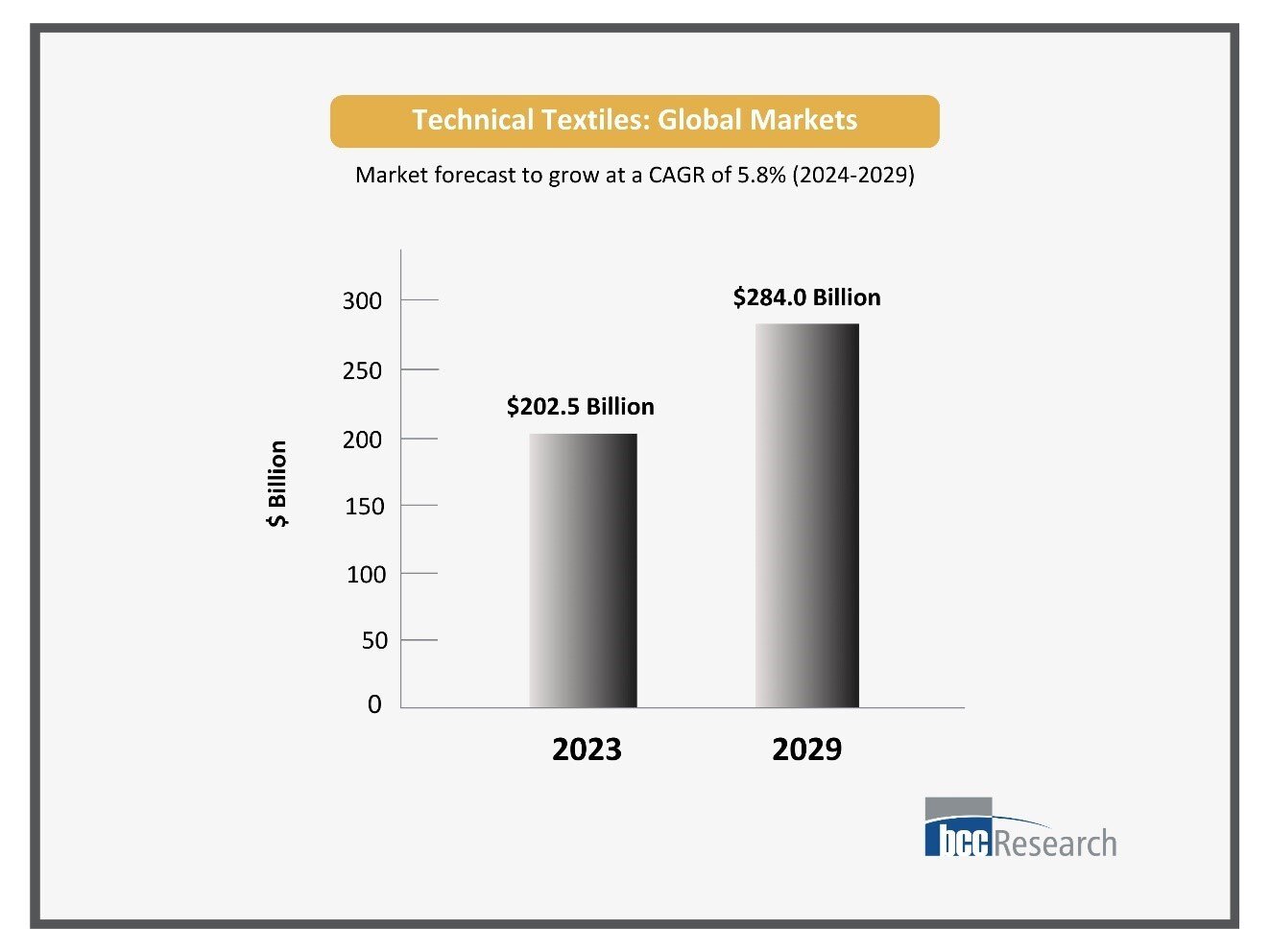
Nov 23, 2024
As technology rapidly evolves, the textile industry is also experiencing groundbreaking advancements. Picture a fabric that responds to environmental changes, offers protection in extreme conditions, and enhances our everyday experiences. The rise of technical textiles marks a new era of innovation and functionality, transforming the way we live.
Let's explore a world where fabrics are intelligent, high-performance, and full of endless possibilities.
Technical textiles are fabrics designed for their performance and functionality, rather than for their look or decoration. The textile industry is increasingly focusing on these non-clothing applications. These textiles are used to improve the strength, durability, or functionality of products like firefighter uniforms and outdoor coverings. They also play a key role in manufacturing, such as filtering fabrics in the food industry or papermaking materials in mills.
According to BCC Research the demand for Technical Textiles: Global Markets is expected to grow from $213.8 billion in 2024 and is projected to reach $284.0 billion by the end of 2029, at a compound annual growth rate (CAGR) of 5.8% during the forecast period of 2024 to 2029.

The global market for technical textiles is expected to grow from $213.8 billion in 2024 and is projected to reach $284.0 billion by the end of 2029, at a compound annual growth rate (CAGR) of 5.8% during the forecast period of 2024 to 2029.
What are the Major Types of Technical Textiles?
Technical textiles are categorized based on their applications across different industries. The main types of these specialized textiles include:
Consider becoming a member of the BCC Research library and gain access to our full catalog of market research reports in your industry. Not seeing what you are looking for? We offer custom solutions too, including our new product line: Custom Intelligence Services.
Contact us today to find out more.

Divya Dhamija is a Senior Executive of Marketing Operations at BCC Research, with a master’s degree in business. She specializes in optimizing marketing strategies and content creation and is dedicated to driving organizational growth through strategic marketing initiatives.

Biophotonics: Technologies and Global Markets (PHO024B)

Global Trade: A Strategic Shift The global trade environment is undergoing a dra...

The global demand for cutting-edge materials continues to rise, and at the foref...

We are your trusted research partner, providing actionable insights and custom consulting across life sciences, advanced materials, and technology. Allow BCC Research to nurture your smartest business decisions today, tomorrow, and beyond.
Contact UsBCC Research provides objective, unbiased measurement and assessment of market opportunities with detailed market research reports. Our experienced industry analysts assess growth opportunities, market sizing, technologies, applications, supply chains and companies with the singular goal of helping you make informed business decisions, free of noise and hype.